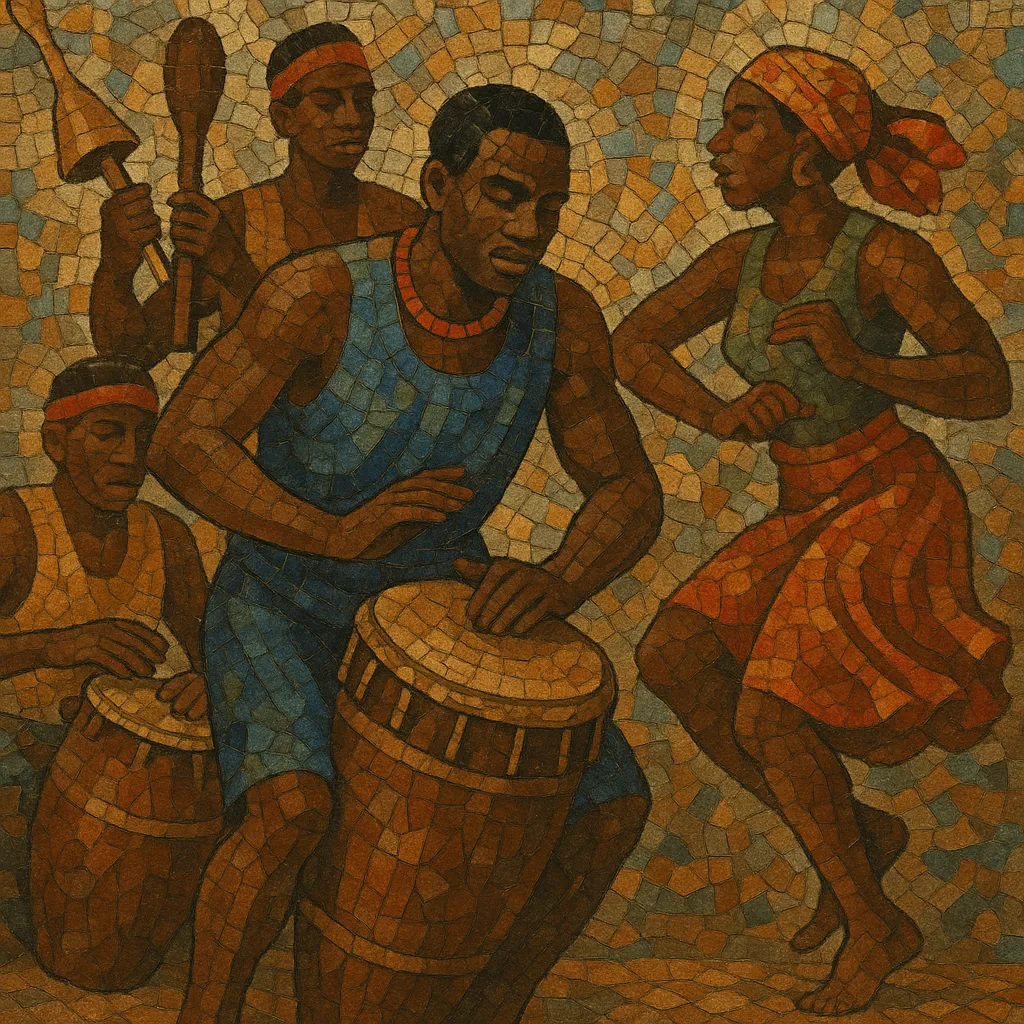
Tchinkoumé is a traditional dance-music style from southern Benin, rooted in the cultural practices of Fon- and Goun-speaking communities. It features interlocking polyrhythms played on drums and bells, call-and-response vocals, and communal dance that celebrates social and ritual life.
The music is typically in a 12/8 feel with driving bell timelines, layered hand and barrel drums, and rattles. Songs often unfold through chanted refrains and short verses, with vocal lines delivered in local languages. Its earthy groove and ceremonial intensity made Tchinkoumé both a village ritual music and a foundation for later urban Beninese styles.
Tchinkoumé emerged in southern Benin as a community dance and ceremonial music tied to social gatherings and local ritual life. Its rhythmic language draws from Fon and Goun traditions, where bell timelines, hand drums, and rattles organize dance and call-and-response singing.
Through the early-to-mid 20th century, urbanization and local performance troupes helped codify the repertoire and choreography. Ensembles retained the core 12/8 polyrhythms but adapted song structures for staged presentations, festivals, and radio, making the style more visible across Benin.
By the late 20th century, musicians began fusing Tchinkoumé’s percussion bed and choral hooks with guitars, keyboards, and modern bass lines, leading to the creation of “Tchink System.” This offshoot preserved the pulse and call-and-response of Tchinkoumé while embracing amplification and popular song forms, helping carry the tradition into dancehalls and recordings.
Today, Tchinkoumé persists in community ceremonies and cultural troupes, while its rhythmic DNA continues to inform Beninese pop, jazz-brass groups, and stage productions. Archival and folkloric projects, along with international tours by Beninese ensembles, have further documented and revitalized the style.

